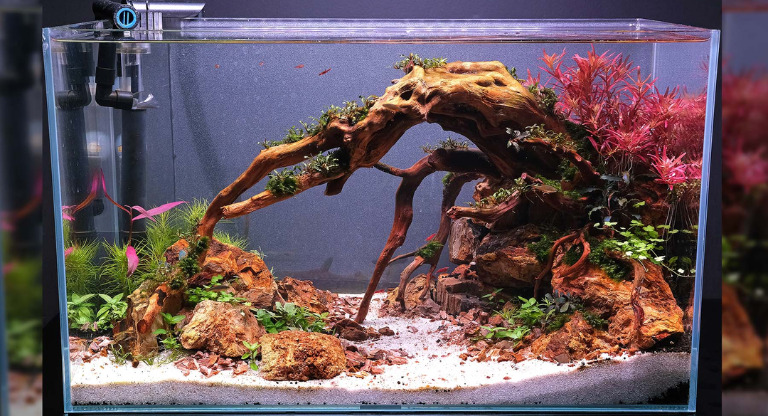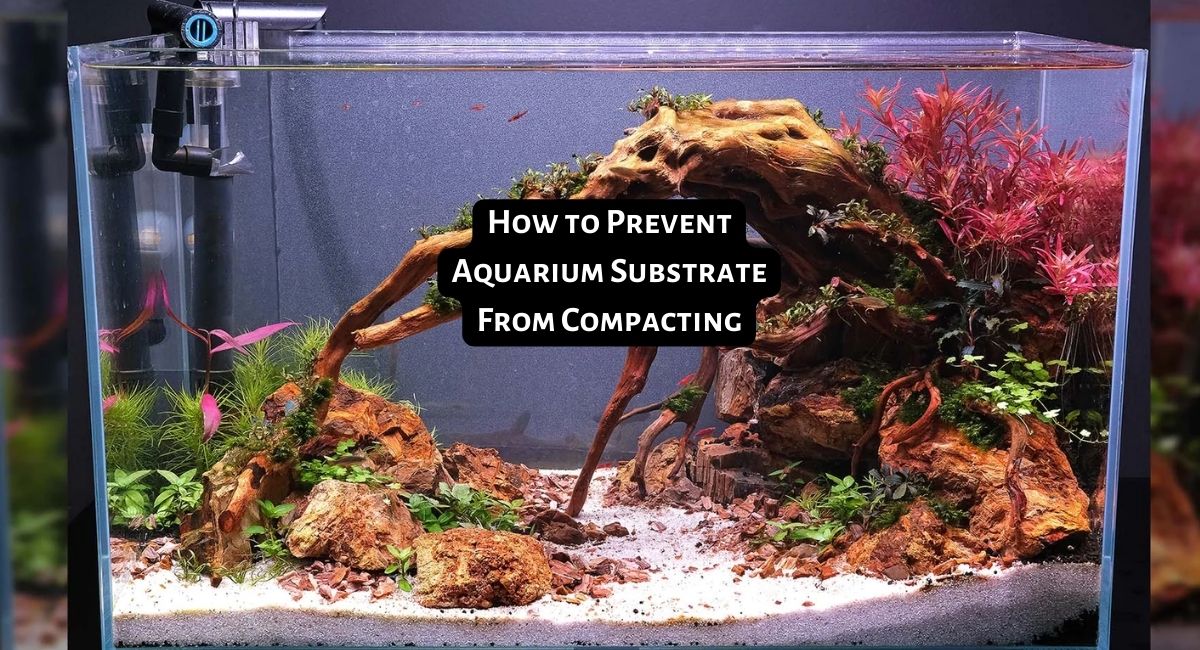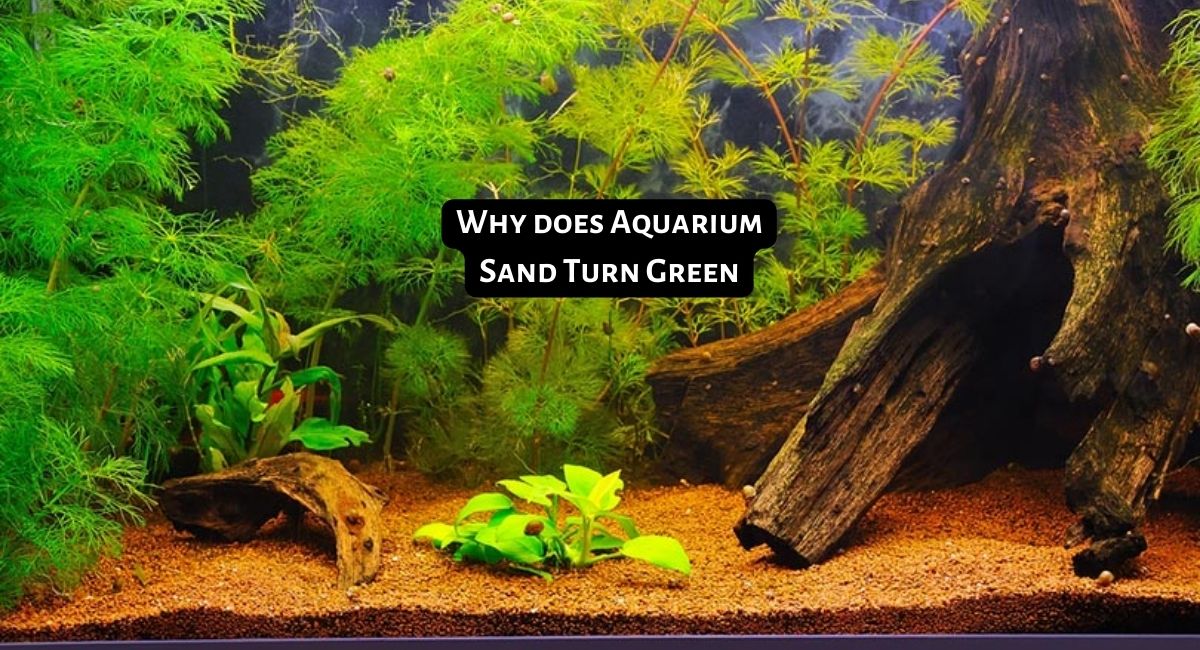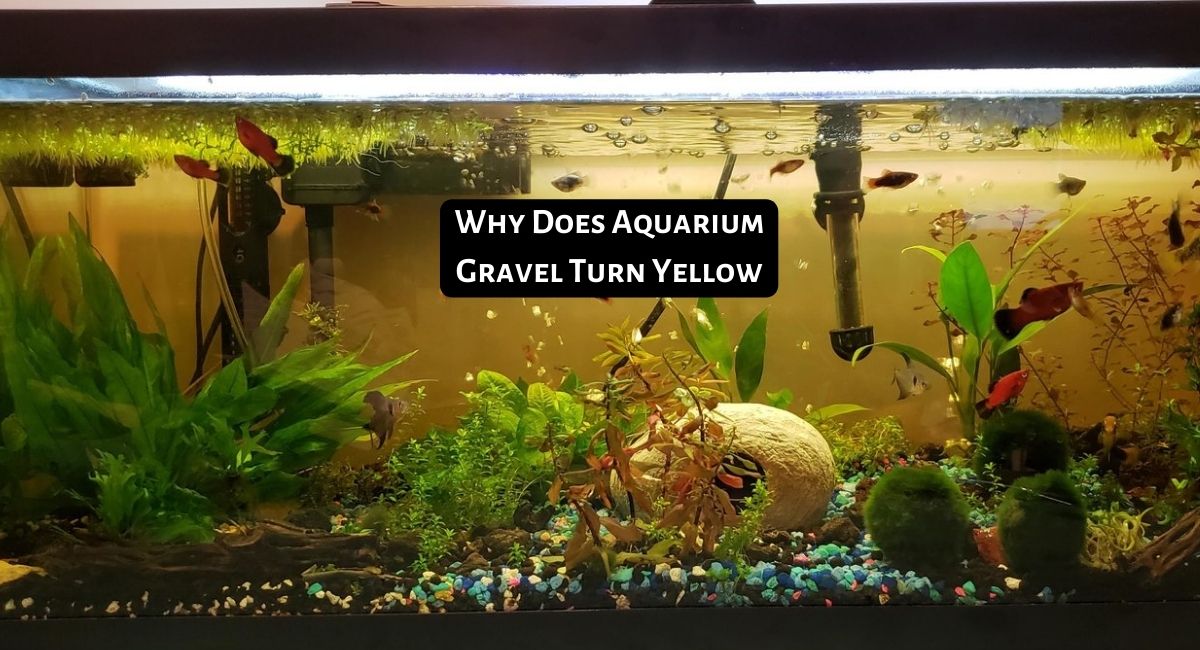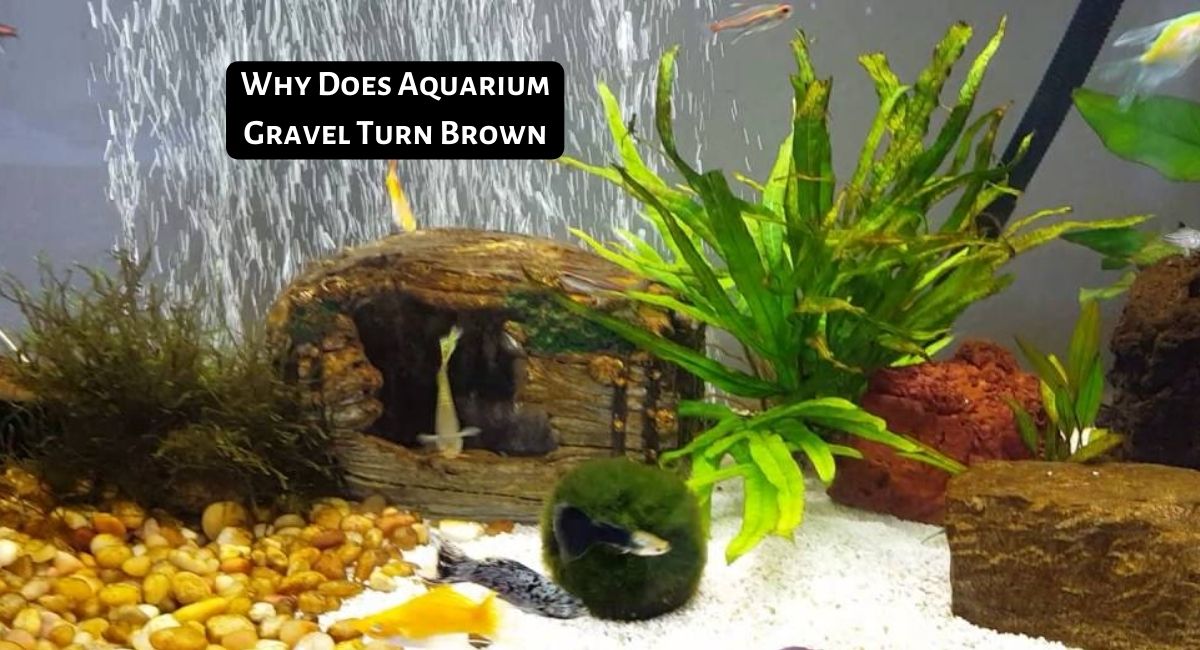Smartplantedaquarium.com participates in affiliate marketing programs. We may earn commissions on purchases made through our affiliate links. This doesn't affect our content or recommendations and we only recommend products we would put in our own tanks.
Common aquarium substrate problems can arise due to various factors. Here are some potential issues that aquarists may encounter with aquarium substrates:
Poor Water Quality: Improperly maintained or low-quality substrates can contribute to poor water quality in the aquarium. Organic matter trapped in the substrate can decompose, leading to increased ammonia, nitrate, and nitrite levels. This can stress or harm the fish and other inhabitants of the tank.
Compromised Filtration: Substrates that are too fine or compacted can impede water circulation and filtration. Insufficient water flow through the substrate can result in the accumulation of debris, leading to reduced biological filtration and increased risk of ammonia spikes.
Accumulation of Waste: Inadequate substrate maintenance, such as infrequent vacuuming or a deep substrate bed, can cause waste and detritus to accumulate in the substrate. This can lead to the release of harmful compounds, degradation of water quality, and the growth of undesirable microorganisms.
pH and Mineral Imbalances: Some substrates, such as crushed coral or aragonite, can raise the pH and hardness of the water, which may be undesirable for certain fish species or aquatic plants. It’s important to select substrates that align with the specific needs of the aquarium’s inhabitants and monitor water parameters regularly.
Plant Root Issues: Unsuitable or poor-quality substrates can hinder plant growth by inhibiting root development. Plants may struggle to anchor themselves or extract nutrients from the substrate, leading to stunted growth or plant health issues. It’s important to choose substrates specifically designed for planted aquariums and consider the needs of the plants being cultivated.
Sharp or Rough Edges: Substrates with sharp or rough edges can cause injuries to bottom-dwelling fish, such as catfish or loaches, as they forage or sift through the substrate. It’s advisable to select substrates that are smooth and free from sharp edges to ensure the well-being of the aquarium’s inhabitants.
Difficulty in Cleaning: Some substrates, such as fine sand, can be challenging to clean efficiently without causing excessive disturbance or clouding the water. Regular maintenance, including vacuuming and water changes, is crucial to prevent the accumulation of waste and maintain optimal water quality.
foul odor
fish stress
Cloudy Aquarium Substrate
Cloudy aquarium substrate in a planted tank can be caused by several factors. Here are some possible reasons and solutions to address the issue:
- New Tank Syndrome: In newly set up planted tanks, cloudiness can be a result of the tank cycling process. During the initial stages, beneficial bacteria are establishing themselves, and this can cause temporary cloudiness. This is commonly known as “new tank syndrome” and should resolve on its own within a few days to a couple of weeks. Regular water changes and the addition of beneficial bacteria supplements can help speed up the cycling process.
- Insufficiently Rinsed Substrate: If you recently added or replaced the substrate in your planted tank and did not rinse it thoroughly, residual dust and fine particles can cause cloudiness. To address this, you can remove the cloudy water by performing partial water changes and using a fine mesh net or filter media bag to filter out the suspended particles. Additionally, running a mechanical filter with filter floss or a filter pad can help in trapping the particles and clearing the water.
- Organic Waste and Decomposition: Over time, organic waste, decaying plant matter, and uneaten food can accumulate in the substrate. This can lead to cloudy water and an increase in ammonia and nitrate levels. Regular maintenance, including vacuuming the substrate during water changes, will help remove the accumulated waste and prevent cloudiness. Ensure that you are not overfeeding your fish and remove any decaying plant matter promptly.
- Algae Blooms: Cloudy water in a planted tank can also be caused by an algae bloom. Algae thrive in the presence of excess nutrients and light. To address this, maintain a proper balance of light duration and intensity by adjusting the lighting period and using a timer. Additionally, consider reducing nutrient levels through proper feeding practices and regular water changes. Introducing algae-eating fish or invertebrates, such as nerite snails or Amano shrimp, can also help control algae growth.
- Improper Water Circulation: Inadequate water circulation can contribute to stagnant areas in the tank, leading to the accumulation of debris and cloudiness. Ensure that you have adequate water flow by positioning the filter outlet strategically and using circulation pumps or powerheads if necessary. This will help distribute nutrients and oxygen evenly and prevent debris from settling in the substrate.
Anaerobic Gas Build Up
Anaerobic gas build-up in an aquarium can be a concern as it can affect water quality and the well-being of the aquatic inhabitants. Anaerobic conditions occur when there is a lack of oxygen in certain areas of the aquarium, typically in the substrate or in areas with poor water circulation. This can lead to the production of gases such as hydrogen sulfide (H2S), methane (CH4), and carbon dioxide (CO2). Here’s what you need to know about anaerobic gas build-up and how to address it:
- Causes of Anaerobic Conditions: Anaerobic conditions can be caused by factors such as deep or compacted substrate, overfeeding, excessive organic waste, lack of water movement, and inadequate biological filtration. These conditions create pockets of stagnant water where oxygen cannot penetrate effectively, promoting the growth of anaerobic bacteria.
- Effects of Anaerobic Gas Build-Up: The accumulation of anaerobic gases can lead to several issues. Hydrogen sulfide is toxic to aquatic life and can cause fish stress, respiratory problems, and even fatalities. Methane and carbon dioxide can also affect fish and other inhabitants by altering the pH balance and dissolved oxygen levels in the water. Additionally, anaerobic conditions can contribute to foul odors and the release of harmful compounds into the water.
- Prevention and Solutions: a. Proper Substrate Maintenance: Regular substrate maintenance is crucial to prevent anaerobic conditions. Avoid overcompacting the substrate, especially in planted tanks, and ensure adequate water circulation by using powerheads, circulation pumps, or well-placed filter outlets. b. Avoid Overfeeding: Overfeeding leads to excess organic waste that can contribute to anaerobic conditions. Feed your fish in moderation, and remove any uneaten food to prevent organic buildup. c. Increase Water Movement: Improve water circulation by adjusting the positioning of filters, adding additional circulation equipment, or directing water flow toward stagnant areas. d. Substrate Vacuuming: During routine maintenance, use a gravel vacuum to remove debris and waste from the substrate. This helps prevent the buildup of organic matter that can contribute to anaerobic conditions. e. Introduce Oxygenation: Increase oxygen levels in the aquarium by using an air stone, airstone-driven sponge filter, or surface skimmer. This helps create a well-oxygenated environment that discourages anaerobic bacteria growth. f. Avoid Deep Substrates: Deep substrate layers can promote anaerobic conditions. If you prefer a deeper substrate, consider using substrates specifically designed for planted tanks or those that promote water flow and prevent compaction.
- Monitor Water Parameters: Regularly test water parameters such as pH, ammonia, nitrite, and nitrate levels to ensure they are within the appropriate range. This will help you detect any imbalances or potential issues, including anaerobic conditions.
Black Beard Algae
Black beard algae (BBA), also known as brush algae, is a common type of filamentous algae that can be a nuisance in aquariums. It forms dark, black or dark green tufts that resemble a beard, typically attaching itself to plants, decorations, and even the glass surfaces of the tank. Here’s some information on black beard algae and how to deal with it:
- Causes of Black Beard Algae:
- Imbalance of nutrients: BBA can thrive in aquariums with an excess of nutrients, especially when there is an imbalance between light, carbon dioxide (CO2), and nutrient levels.
- Low CO2 levels: Insufficient levels of carbon dioxide can provide favorable conditions for BBA growth.
- Poor water circulation: Stagnant areas in the aquarium with low water flow can promote the growth of BBA.
- Introduction from contaminated sources: Black beard algae can enter the aquarium from contaminated plants, decorations, or new fish.
- Prevention and Control:
- Improve water circulation: Ensure adequate water movement in the tank by positioning filters, using powerheads, or adding circulation pumps. This will help prevent stagnant areas where BBA can thrive.
- Optimize lighting: Adjust the duration and intensity of lighting to create a balanced environment for your aquarium. Be mindful of excessive or inconsistent lighting, as it can promote BBA growth.
- Balance nutrients: Maintain proper nutrient levels by regularly testing the water and adjusting fertilization accordingly. Avoid excessive nutrient levels, especially phosphates and nitrates, which can fuel BBA growth.
- Carbon dioxide supplementation: Consider adding a carbon dioxide system to your planted aquarium, as optimal CO2 levels can inhibit BBA growth and promote the health of your plants.
- Manual removal: Remove visible black beard algae manually by gently scrubbing affected surfaces or carefully trimming and removing heavily infested plant leaves. Be cautious not to spread the spores of the algae during removal.
- Introduce algae eaters: Certain fish and invertebrates, such as Siamese algae eaters, Amano shrimp, or nerite snails, are known to consume BBA. Introducing them into the aquarium can help control the algae population.
- Quarantine and treat new additions: Quarantine any new plants or decorations before introducing them to the main aquarium to prevent the introduction of black beard algae from contaminated sources.
Brown Diatom Algae
Brown diatom algae, also known as brown algae or diatoms, is a common type of algae that can appear in aquariums. It forms brown or golden-brown patches or coatings on various surfaces, including glass, substrate, plants, and decorations. Brown diatoms are often seen in newly established aquariums or tanks with low light levels. Here’s some information on brown diatom algae and how to deal with it:
- Causes of Brown Diatom Algae:
- New Tank Syndrome: Brown diatoms commonly appear in newly set up aquariums as part of the natural cycling process. They tend to thrive during the initial stages when the tank is still establishing its biological balance.
- Low Light Conditions: Insufficient lighting or inadequate light duration can contribute to the growth of brown diatoms. This is especially true in aquariums with low-light plants or in tanks without live plants.
- Nutrient Imbalances: Brown diatoms can take advantage of low-nutrient environments. Nitrate and silicate imbalances, in particular, can promote their growth.
- Silicates in Water: Elevated levels of silicates in the water can contribute to the growth of brown diatom algae. Silicates are commonly found in tap water or can leach from certain substrates or decorations.
- Prevention and Control:
- Maintain Proper Lighting: Ensure that your aquarium receives appropriate lighting for the specific needs of your plants or inhabitants. Provide a consistent light period and consider using full-spectrum lights or LED fixtures suitable for plant growth.
- Establish a Balanced Nutrient Profile: Regularly test the water parameters and adjust fertilization accordingly. Properly balanced nutrient levels, including nitrates and phosphates, can help prevent the overgrowth of brown diatoms.
- Increase Water Flow: Improve water circulation in the aquarium to prevent stagnant areas where brown diatoms can settle. Position filters and use powerheads or circulation pumps to promote better water movement.
- Regular Water Changes: Perform regular partial water changes to help maintain optimal water conditions and reduce the concentration of nutrients that promote brown diatom growth.
- Manual Removal: Gently scrub affected surfaces, such as glass or decorations, to remove visible brown diatoms. Consider using an algae scraper or a soft brush to avoid damaging delicate surfaces.
- Introduce Algae-Eating Inhabitants: Certain fish and invertebrates, such as Otocinclus catfish or Amano shrimp, are known to consume brown diatoms. Introducing them to the aquarium can help control the algae population.
- Silicate Removal: Use a high-quality silicate remover or chemical filtration media to reduce silicate levels in the water. This can help prevent or limit the growth of brown diatoms, especially if elevated silicates are detected.
Blue-Green Algae (BGA)
Blue-green algae (BGA), also known as cyanobacteria, is a type of photosynthetic bacteria that can be problematic in aquariums. Despite its name, BGA is not actually algae but a bacteria that can form slimy blue-green or green mats in the aquarium. BGA can quickly spread and coat various surfaces, including plants, substrate, decorations, and even the glass. It is known for its strong, foul odor and can release toxins that can harm aquarium inhabitants. Here’s some information on blue-green algae and how to deal with it:
- Causes of Blue-Green Algae:
- Nutrient Imbalances: Elevated levels of nutrients, particularly nitrates and phosphates, can contribute to the growth of BGA. Excess nutrients can be a result of overfeeding, decaying organic matter, inadequate water changes, or poor filtration.
- Poor Water Circulation: Inadequate water flow or stagnant areas in the aquarium can create conditions favorable for the growth of BGA. Insufficient circulation can result from improper positioning of filters or lack of powerheads or circulation pumps.
- Low Oxygen Levels: BGA can thrive in low-oxygen environments. Poor aeration or low oxygen exchange at the water surface can promote its growth.
- Prevention and Control:
- Maintain Proper Water Parameters: Regularly test the water parameters, especially nitrates and phosphates, and ensure they are within the appropriate range for your aquarium inhabitants. Perform regular water changes to help maintain optimal water quality.
- Optimize Filtration: Ensure that your filtration system is properly sized and functioning efficiently. Consider using mechanical and chemical filter media to help remove excess nutrients from the water.
- Increase Water Flow: Improve water circulation by adjusting the position of filters, using powerheads or circulation pumps, or adding additional water movement devices. Adequate water flow helps prevent stagnant areas where BGA can thrive.
- Reduce Nutrient Sources: Avoid overfeeding your fish and promptly remove any excess food. Minimize the accumulation of decaying organic matter by regular substrate vacuuming and cleaning of decorations.
- Introduce Algae-Eating Inhabitants: Some fish species, such as Siamese algae eaters or certain species of plecos, can help control BGA by consuming it. Additionally, certain invertebrates like Amano shrimp can graze on BGA. However, it’s important to note that these organisms may not completely eradicate BGA and should not be solely relied upon for control.
- Manual Removal: If possible, manually remove visible BGA by gently siphoning or scrubbing affected surfaces. However, take care to avoid breaking apart the algae, as this can release more toxins into the water.
- Improve Oxygenation: Increase oxygen levels in the aquarium by using an air stone, airstone-driven sponge filter, or surface skimmer. This helps create a well-oxygenated environment that can inhibit the growth of BGA.
Green Hair Algae (GHA)
Green hair algae (GHA) is a common type of filamentous algae that can be a nuisance in aquariums. It forms long, stringy, green strands that can attach to various surfaces, including plants, decorations, and substrate. GHA can quickly grow and cover large areas, affecting the aesthetics of the aquarium and potentially outcompeting desirable plants. Here’s some information on green hair algae and how to deal with it:
- Causes of Green Hair Algae:
- Imbalance of Light and Nutrients: GHA often thrives in aquariums with high levels of light and excess nutrients, particularly nitrates and phosphates. Imbalances in the light-to-nutrient ratio can provide favorable conditions for GHA growth.
- Inadequate Water Flow: Insufficient water circulation and stagnant areas in the aquarium can promote GHA growth. Proper water movement helps prevent the accumulation of nutrients and detritus that contribute to its development.
- Introduction from External Sources: GHA can be introduced to the aquarium through new plants, decorations, or contaminated water.
- Prevention and Control:
- Optimize Lighting: Adjust the duration and intensity of lighting to create a balanced environment for your aquarium. Avoid excessive lighting, especially in tanks without high-demand plants. Use a timer to ensure consistent lighting periods.
- Nutrient Control: Regularly test the water parameters, particularly nitrates and phosphates, and maintain them within the appropriate range for your aquarium. Perform regular water changes and consider using chemical filtration media to help reduce nutrient levels.
- Improve Water Circulation: Enhance water flow by positioning filters, using powerheads, or adding circulation pumps to prevent stagnant areas. This helps inhibit the growth of GHA by preventing nutrient accumulation.
- Manual Removal: Gently remove visible GHA by carefully pulling or trimming the algae strands. Be cautious not to break apart the algae, as this can lead to further spreading. Consider using an algae scraper or toothbrush to remove GHA from hard surfaces.
- Introduce Algae-Eating Inhabitants: Certain fish and invertebrates, such as certain species of snails (e.g., nerite snails) or algae-eating fish (e.g., Siamese algae eaters), can help control GHA by consuming it. However, note that these organisms may not eliminate GHA entirely and should not be relied upon as the sole means of control.
- Manual Disturbance: Gently brushing or swishing affected plants or decorations in the aquarium can help dislodge and remove GHA. Follow this with thorough cleaning and removal of dislodged algae to prevent it from reattaching and regrowing.
- Algae Control Products: There are commercial products available that claim to target and control GHA. However, it’s important to carefully follow the instructions and consider their potential impact on other aquarium inhabitants and the overall ecosystem.
Green Spot Algae (GSA)
Green spot algae (GSA) is a type of freshwater algae that commonly appears as small, dark green spots on aquarium surfaces, including glass, plants, and decorations. It forms a hard coating that can be challenging to remove. Here’s some information on green spot algae and how to deal with it:
- Causes of Green Spot Algae:
- Imbalance of Light and Nutrients: GSA often occurs in aquariums with moderate to high light levels combined with a deficiency in certain nutrients, particularly carbon dioxide (CO2) and phosphates.
- Low Carbon Dioxide Levels: Insufficient carbon dioxide levels can contribute to the growth of GSA. Carbon dioxide is an essential nutrient for plants and helps maintain a balance between plant growth and algae growth.
- Slow Water Movement: Insufficient water circulation and low flow areas in the aquarium can contribute to the growth of GSA. These stagnant areas allow nutrients to accumulate, creating favorable conditions for algae growth.
- Low Phosphate Levels: Although excessive phosphate levels can fuel the growth of some algae types, GSA tends to appear when there is a deficiency of phosphate in the water.
- Prevention and Control:
- Optimize Lighting and Photoperiod: Adjust the intensity and duration of lighting to create a balanced environment for your aquarium. Avoid excessive lighting and ensure a consistent photoperiod. Use a timer to regulate lighting periods.
- Carbon Dioxide Supplementation: If you have live plants in your aquarium, consider supplementing carbon dioxide. Providing adequate carbon dioxide levels can help prevent GSA growth by promoting healthy plant growth and competition against algae.
- Nutrient Balance: Maintain a proper balance of nutrients, including phosphates, nitrates, and trace elements, to prevent nutrient deficiencies or imbalances that can contribute to GSA growth. Regularly test and adjust nutrient levels as needed.
- Increase Water Flow: Enhance water circulation by adjusting the positioning of filters, adding powerheads or circulation pumps, or incorporating a wavemaker. Proper water movement helps prevent the accumulation of nutrients and inhibits GSA growth.
- Manual Removal: Gently scrub affected surfaces using an algae scraper, soft brush, or sponge. Regularly remove and clean any equipment or decorations that have a buildup of GSA. Be careful not to scratch glass surfaces.
- Phosphate Supplementation: In cases where phosphate levels are extremely low, supplementing with a phosphate source specifically designed for aquarium use may help inhibit GSA growth. However, it’s crucial to use such products judiciously and carefully follow the instructions to avoid imbalances.
- Algae-Eating Inhabitants: Some fish and invertebrates, such as certain species of snails (e.g., nerite snails) or Siamese algae eaters, may consume GSA. Introducing these organisms into the aquarium can help control GSA, but they should not be solely relied upon as the primary method of control.
Green Water Algae
Green water algae, also known as “green water” or “pea soup algae,” refers to the phenomenon where the water in an aquarium turns green due to an overgrowth of microscopic algae. This type of algae is typically free-floating and forms a dense, cloudy green or greenish-brown suspension in the water. Here’s some information on green water algae and how to deal with it:
- Causes of Green Water Algae:
- Excessive Nutrients: Green water algae thrive in environments with high levels of nutrients, particularly nitrates and phosphates. These nutrients can originate from overfeeding, decaying organic matter, inadequate filtration, or an imbalance in the nitrogen cycle.
- Excessive Light: Green water algae require light for photosynthesis. Intense or prolonged exposure to light, especially sunlight or excessive artificial lighting, can stimulate their rapid growth.
- Poor Filtration or Inadequate Circulation: Insufficient filtration or inadequate water movement can contribute to the accumulation of nutrients in the water column, creating favorable conditions for green water algae to multiply.
- Lack of Biological Balance: Insufficient beneficial bacteria or other organisms responsible for biological filtration can result in an imbalance that allows green water algae to flourish.
- Prevention and Control:
- Reduce Nutrient Levels: Perform regular water changes to reduce the concentration of nutrients in the water. Avoid overfeeding and promptly remove any excess food. Use chemical filtration media, such as activated carbon or phosphate removers, to help reduce nutrient levels.
- Limit Light Exposure: Control the duration and intensity of lighting in the aquarium. Ensure a proper light cycle with periods of darkness to inhibit the growth of green water algae. Consider using a timer to automate lighting schedules.
- Increase Filtration and Water Movement: Enhance filtration by using an appropriate filter system and regularly cleaning or replacing filter media. Ensure adequate water movement and circulation to prevent stagnant areas where nutrients can accumulate.
- Introduce Algae-Eating Organisms: Certain fish species, such as Siamese algae eaters, plecos, or some species of livebearers, can consume green water algae. Additionally, some invertebrates like Daphnia or copepods can help control green water by feeding on the algae. However, they may not completely eliminate the algae and should be considered as part of a comprehensive control strategy.
- Blackout Period: A temporary blackout period of several days (typically 2-4 days) can help suppress the growth of green water algae. Cover the aquarium to block out all light during this period and maintain minimal disturbance. This method disrupts the algae’s photosynthesis and can be followed by implementing preventive measures to avoid a resurgence.
- Improve Biological Filtration: Ensure a healthy population of beneficial bacteria by establishing a matured biological filter. Regularly test water parameters and maintain appropriate levels of ammonia, nitrite, and nitrate to promote a stable nitrogen cycle.
Hair Algae
Red Algae (Rhodophyta)
Slime Algae
Staghorn Algae
Floating Substrate
To avoid these problems, it is important to select appropriate substrates for the aquarium, perform regular maintenance, and monitor water parameters to ensure a healthy and thriving aquatic environment.
